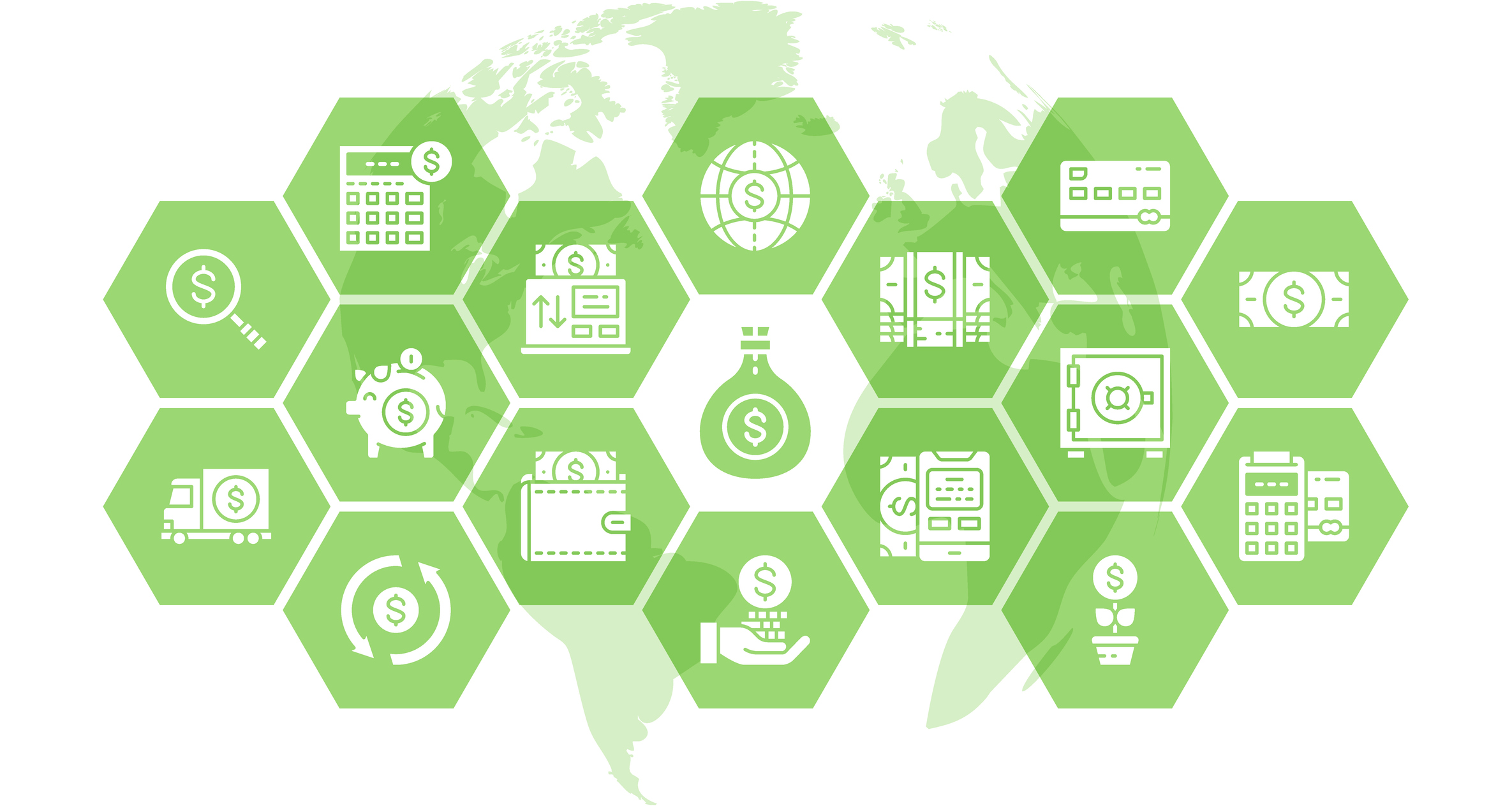Securing SaaS funding is a critical step for startups aiming to develop and scale their Minimum Viable Products (MVPs). For many Canadian entrepreneurs in the software-as-a-service (SaaS) sector, finding the right funding can make the difference between a project's success or stagnation.
SaaS funding not only provides the financial resources needed to build and refine your MVP but also validates your business idea in the eyes of stakeholders and potential customers. It's an essential investment that fuels growth, innovation, and market penetration.
Exploring SaaS Funding Options in Canada
The funding environment for SaaS startups in Canada is both vibrant and challenging, shaped by a range of economic factors and investor interests. Canadian SaaS startups find themselves at the center of an increasingly supportive ecosystem that includes venture capitalists, angel investors, and governmental incentives. However, navigating this terrain requires a deep understanding of the current trends and statistics that drive investment decisions.
In recent years, Canada has seen a surge in venture capital flowing into technology sectors, with SaaS platforms standing out due to their scalable nature and recurring revenue models. According to industry reports, Canadian tech startups raised billions in funding last year alone, with a significant portion directed towards SaaS companies (source). This influx is driven by a growing recognition of the long-term value SaaS businesses can deliver.
Trends indicate a preference among investors for platforms that demonstrate not only innovation but also potential for rapid user growth and market expansion. As such, SaaS startups are increasingly expected to show early traction and a clear path to profitability to attract funding.
Key Players in SaaS Investment
Securing funding for SaaS startups involves engaging with a variety of investors, each playing a distinct role in the ecosystem. In Canada, the primary sources of SaaS funding are venture capitalists (VCs), angel investors, and government grants, each offering unique advantages and focusing on different stages of startup development.
- Venture Capitalists:
VCs are often interested in SaaS startups due to the potential for high returns on investment through scalable business models. Canadian VCs are particularly active in later funding rounds, seeking companies with proven business models and the potential for rapid growth. They provide not only capital but also strategic guidance to help companies scale operations and expand into new markets. - Angel Investors:
Angel investors typically engage during the earlier stages of a startup's life cycle. These individuals or groups provide seed funding and are invaluable for MVP development and initial market entry. Canadian angel investors often come from tech backgrounds themselves and can offer mentorship and industry connections along with financial support. - Government Grants:
The Canadian government offers several grants and funding programs designed to support innovation and technology startups. Programs such as the Scientific Research and Experimental Development (SR&ED) tax incentive program provide financial aid to businesses engaged in research and development, which can be particularly beneficial for SaaS companies at the MVP stage.
In addition to these primary players, Canadian SaaS startups can also explore specific funding opportunities such as:
- The Industrial Research Assistance Program (IRAP):
This program provides financial support to qualified firms to develop technologies and create new products or services. - The Canada Foundation for Innovation (CFI):
CFI offers support for the infrastructure needs of Canada’s research community, including digital infrastructure critical for emerging SaaS companies. - The Strategic Innovation Fund (SIF):
Aimed at larger projects, SIF encourages collaborations that spur innovation and can help scale SaaS solutions across industries and markets.
Preparing Your MVP for Investor Scrutiny
When presenting your Minimum Viable Product (MVP) to potential investors, it’s crucial that your MVP is not only well-defined but also effectively demonstrates its market viability and scalability. This preparation is key to convincing investors that your SaaS product has the potential for growth and is worth their investment.
A Well-Defined MVP
A well-defined MVP should clearly showcase the core functionality that solves a specific problem or fulfills a need in the market. This focus helps in proving the concept while keeping development costs in check. It's important that the MVP can demonstrate tangible value to its users from the outset, providing a strong foundation for further development based on user feedback and initial market reactions.
Demonstrating Value and Scalability
To effectively demonstrate the value and scalability of your SaaS product, consider:
- User Feedback: Incorporate feedback from initial users to show proof of concept and the potential for wider adoption.
- Market Analysis: Provide data on market size, customer segments, and potential growth to highlight scalability.
- Technology Stack: Outline the robustness of your technology architecture to assure investors of your product’s ability to handle scaling.
Building a Compelling Pitch
A successful pitch to investors should include a clear articulation of your business model, an understanding of market potential, and a demonstration of your competitive edge. It should tell a compelling story that connects your SaaS product with market needs and investor interests.
When pitching your SaaS MVP to potential investors, it is crucial to articulate your business model, market potential, and competitive edge clearly and compellingly. This section of your presentation is where you connect the dots between your product and the opportunity it represents.
You'll need to convincingly explain how your business will generate revenue, the scalability of the market you’re entering, and what sets your offering apart from the competition. This not only demonstrates your understanding of the market dynamics but also reassures investors of your capacity to navigate the competitive landscape and capitalize on the opportunities available.
Each element should weave together to form a coherent narrative that highlights the viability and unique position of your SaaS product in the marketplace
- Business Model: Clearly explain how your SaaS product will generate revenue. Be specific about your pricing strategy, sales model, and customer acquisition plans.
- Market Potential: Highlight the size of the market and your target audience. Show data-supported predictions of market growth and how your MVP fits into this landscape.
- Competitive Edge: Discuss what sets your SaaS product apart from competitors. This might include proprietary technology, partnerships, first-mover advantage, or superior UX/UI design.
Financial Projections and Metrics
The ability to present robust financial projections and relevant metrics is key to attracting and securing investor confidence. This section focuses on the critical financial indicators that investors scrutinize to assess the health and potential of a SaaS business.
Understanding and effectively communicating these metrics—such as Monthly Recurring Revenue (MRR), Customer Acquisition Costs (CAC), and the ratio of Lifetime Value (LTV) to CAC—can significantly influence funding outcomes. These metrics not only reflect the current financial status of your startup but also project its growth trajectory and profitability.
- Monthly Recurring Revenue (MRR) and Annual Recurring Revenue (ARR): Show consistent income potential.
- Customer Acquisition Cost (CAC) versus Lifetime Value (LTV): Demonstrate the efficiency of your marketing efforts and long-term profitability.
- Churn Rate: The rate at which customers stop using your SaaS product. Lower churn rates indicate higher customer satisfaction and product stickiness.
Preparing realistic financial forecasts is an indispensable part of pitching your SaaS startup to investors. These forecasts provide a window into the future financial health of your business, illustrating its potential for growth and profitability. A well-crafted financial projection considers both the optimistic potentials and the practical challenges your business might face.
- Be realistic about projections to maintain credibility.
- Provide best, middle, and worst-case scenarios to show preparedness for different market conditions.
- Indicate when and how your SaaS product will become profitable.
Strategies to Secure SaaS Funding
Securing funding is a crucial step for SaaS startups looking to bring their MVPs to market and scale their operations. The process requires a strategic approach, not only to identify potential investors but also to cultivate relationships that could prove beneficial in the long term.
Finding and Securing the Right Investors
Finding and securing the right investors is a pivotal step in the journey of any SaaS startup. By planning your engagement strategy and tailoring your communications, you can increase your chances of forming partnerships that will provide not only capital but also valuable guidance and networks to help propel your business forward
- Identify Potential Investors: Research investors who have a history of funding SaaS companies, especially those with a focus on your industry or technology.
- Tailor Your Pitch: Customize your pitch to align with each investor's interests, highlighting aspects of your MVP that meet their investment criteria.
- Engage Through Multiple Channels: Utilize professional networking sites, startup meetups, and industry conferences to connect with potential investors.
- Follow Up: Maintain communication with potential investors after initial meetings to keep them engaged and informed about your progress.
Networking and Relationship Building
Networking is essential in the Canadian startup ecosystem. Building a strong network can provide not only funding opportunities but also advice, mentorship, and access to further connections. Effective networking strategies include:
- Joining Startup Incubators and Accelerators: These can provide invaluable resources and introductions to potential investors.
- Participating in Industry Events: These events offer opportunities to meet investors and other entrepreneurs who can provide insights and introductions.
- Utilizing Online Platforms: LinkedIn and other professional networks can be powerful tools for reaching out to and connecting with potential investors.
Government Programs and Grants
Canada offers several government programs that can be leveraged by SaaS startups to secure funding:
- Scientific Research and Experimental Development (SR&ED): Provides tax incentives for businesses engaged in research and development within Canada.
- Industrial Research Assistance Program (IRAP): Offers financial support to qualified firms to develop technologies and innovative projects.
- Strategic Innovation Fund (SIF): Aims to spur innovation for larger projects and companies, which can include SaaS businesses.
Navigating government funding processes can be a complex but rewarding endeavor for SaaS startups seeking financial support. Understanding the nuances of these processes is essential for successfully tapping into government grants and incentives. It's important to familiarize yourself with the eligibility criteria, application requirements, and deadlines associated with each program.
- Each program has specific requirements; ensure your startup meets these before applying.
- Detailed records of your development process, financials, and business plan are often required.
- Consider consulting with a grant advisor or someone familiar with government funding to strengthen your application.
Crowdfunding and Alternative Funding Options
Crowdfunding can be an effective way to raise funds while also marketing your MVP. However, it comes with its own set of challenges:
- Pros: Increases visibility, allows you to gauge customer interest, and provides funding without giving up equity.
- Cons: Requires significant marketing effort, and the success heavily depends on the campaign’s reach and appeal.
Exploring non-traditional funding routes can open up a variety of opportunities for SaaS startups looking to finance their operations outside the conventional channels of venture capital and angel investments.
- Bootstrapping: This involves funding your startup through personal finances or revenue generated by the business. It allows full control but limits growth to the pace of revenue.
- Revenue-Based Financing: Investors provide capital in exchange for a percentage of ongoing gross revenues. This method aligns investor returns with company performance, providing flexibility in funding repayment.
Whether through bootstrapping, crowdfunding, or revenue-based financing, these alternative paths offer unique advantages and challenges. Each method allows startups to leverage different aspects of their business model and market engagement to secure the necessary funds.
Securing Success
Securing funding for your SaaS startup is a dynamic and challenging journey that demands persistence, strategic planning, and a proactive approach to networking and relationship building. As you seek to attract the right investors, it’s essential to leverage every advantage available to you.
e-dimensionz Inc specializes in crafting tailored web solutions, including scalable and robust MVPs that not only meet market needs but also showcase the potential for high growth and profitability. Our expertise in SaaS development, combined with a deep understanding of the SaaS business model, can help turn your vision into a market-ready product.




